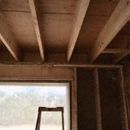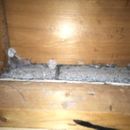Floor joist resting on exterior brick wall (How to insulate?)
This is a weird one, my project home was built in 77, I just noticed this the other day when trying to figure out what insulation method I would be using. Floor joists run past framed exterior walls and rest on the exterior brick along the entire first floor. Initially, I thought I would spray foam the all the cavities to air seal it all, however now I’m second-guessing myself, first I’m not 100% sold on spray foam, I’m a bit concerned with potential off-gassing and curing issues, I’m in Ottawa Canada and it’s already getting chilly. Secondly, I’m not sure if spraying the cavities might seal up that exterior brick wall and potentially cause moisture issues between the brick and sheathing. Another interesting feature is that the first floor of this home sheathing is exterior rated drywall.
My current thought is I that I could fashion some mini exterior walls for each cavity, cut some osb to size, secure roxul combortboard on the exterior of each piece and then glue or caulk them in place where the wall should end, then place roxul batts on the inside to finish. However, if I do that it looks like the second floor would be fully exposed to the cold through the subfloor for several inches, Images attached… thanks in advance for your input.
GBA Detail Library
A collection of one thousand construction details organized by climate and house part












Replies
You may want to consider jacking up those joists a bit and sliding in a capillary break. I like to use HDPE sheet for this purpose because it’s fairly stiff and slippery so it’s easy to slide into the gap. The “jacking up” part isn't as difficult as it sounds. Once you have a capillary break in place, drying ability becomes less of a concern.
You are correct about applying spray foam in low temperatures. When it gets too cold, spray foam doesn’t always adhere properly to the cold surface. Usually you want to be above about 50F or so for best performance when applying.
Bill